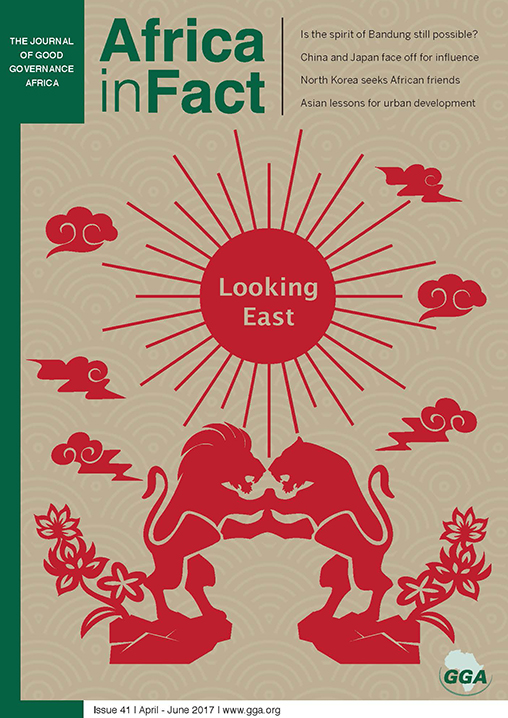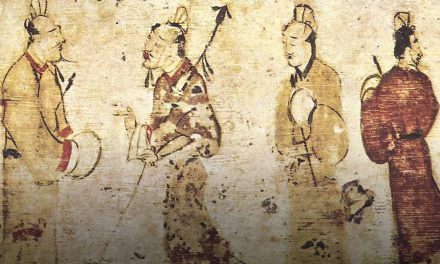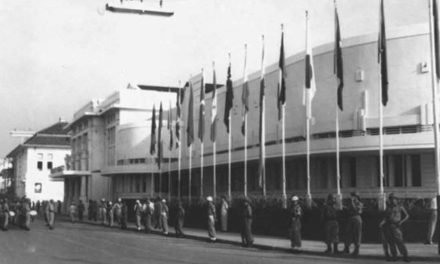
Welcome to this “Looking East” edition of Africa in Fact on Africa-Asia relations. Last year, members of the GGA team paid a visit to Asia, and more specifically, to the Far East.
While transiting Hong Kong, I was struck by the intersecting pathways of its former colonial legacy and recent re- integration with the Chinese mainland. The vestiges of past times combine with cutting-edge infrastructure and technology geared to the many, many people bustling about the place. There is a dynamism of pace that is hard to equate to anything else.
Awakening in Tokyo the next morning, on the 36th floor, our hotel morphed into a swaying, creaking structure. I wondered if I had an extreme case of jetlag; the TV confirmed otherwise. There had been a 7.8 magnitude earthquake at Fukushima, and a tsunami warning had been issued. While one North American visitor shared his fears of doom and gloom on CNN with shaky mobile phone visuals out over the city, the locals were calm and composed. Our hosts at the Asian Development Bank Institute later assured us that Japan had welcomed us “with a shake”. Dean Noshino and colleagues are making their own waves in this issue, with helpful insights from Asian experiences on urbanisation in Africa.
But what a shake it was! The fine attention to detail, the respectful etiquette and the general care with which everything was handled – from the exchange of business cards to the preparation of the cuisine – was refreshing and culturally seismic, to say the least. One dignitary commented, upon receipt of our rather hefty Africa Survey, that more meaningful than the price or volume of the tome, was that we had carried the additional weight over with us as a gift.
Then to Kyoto, the old imperial capital and ecological “golden child” of the United Nations, teeming in the throes of peak tourist season, when visitors gather just to admire the remarkable flora. There Doshisha University runs the slick Graduate School of Global Studies, which not only considers governance in Africa with dedicated area specialists, but also includes graduate students from the African continent, one of whom – Minenhle Mbandlwa – writes in this issue of Africa in Fact.
Next we visited Hiroshima. At the “Dome” or hypocentre of the atomic bomb blast that occurred on 6 August 1945, one is left desperately silent, with a sense of devastation, reinforced by the Peace Memorial and a non-sentimental tour around the Peace Museum. It is as if this one city encapsulates in itself everything from the low-point of human nature, with its resultant post-apocalyptic nuclear wasteland, to the transcendent aspirations that have transformed it into a thriving centre for global peace and non-violence.
As we dashed away on the high-speed Nozomi or “Wish” train to Tokyo, I was struck by a spirit that may be summed up in a word: resilience. This resilience, however, has been built up in relation to the very real threats of nature, or to those posed by other humans or societies. Coupled with this is a long-term outlook that plays itself out not only in the physical design of the buildings or public spaces, but within the very mindset and invisible strategies that guide policy design and implementation. One can only wish … .
Contrast this with the oft-lamented crude “short-termism” that has characterised governance approaches towards, and on, the African continent, and the value of comparative analysis becomes immediately apparent. In our current issue we look to the “Spirit of Bandung” for a reinvigorated Afro-Asian solidarity, in which African and Asian partners might engage on an even playing field.
Hanging off this eastwards hook, with a piece on the extensive history that is shared between Africa and China, our articles consider diverse themes such as mining, farming and climate change on the continent; our authors identify funding models, sources of alternative investment and various investors-cum-competitors from Asia. One thing is sure; it’s an investment jungle out there.
We know from UNCTAD that China, Singapore and India are the major players, with Malaysia, Japan and others not far behind. While China’s FOCAC sees rival interest from Japan’s TICAD, Prime Minister Modi from India takes an African safari to countries of significant interest, namely Kenya, Mozambique, South Africa and Tanzania. The question arises; “Who is on the hunt for what?”
Resources, as ever, are implicated. It is thus that mining grabs in the DRC are discussed, along with the colourful protagonists of projects ranging from North Korean interests in Namibia to the builders of Chinese “ghost cities”. Kenya, for one, is relying on Chinese inputs and interventions to feed its population. With resources come the twin concerns of security and development. On the former, Chinese naval expansion in the Indian Ocean is raising eyebrows; the latter, positing African nations as developmental states bearing similarities with the fairly recently maturing “Asian Tigers”.
Can a model from one geopolitical milieu be transposed onto another? Read further to learn more. It is evident that China has eventually given greater recognition to the necessity of skills transfer to enable local capacity development. However, challenges remain. One of these is identified with respect to the US AGOA policy and the irony that while it is intended to enable African countries to grow, the swelling Chinese and Taiwanese coffers in Lesotho serve mainly to return to the east, leaving little room for genuine growth and development in the mountain kingdom.
Finally, when it comes to sustainability and climate-related issues, perhaps we as Africa could take a leaf or two from the Asians’ books? They have, largely through forums such as ASEAN, presented a collaborative front to address this pressing problem and have, through various governments, invested in innovative science and tech projects to adapt crop science and agricultural practices to prevailing conditions. If there is one thing that the East teaches, it is that speed can be accelerated dramatically when needs must, but equally, that for force to be maximised there needs to be mass – and that mass only builds over time. A long, long time.
Alain Tschudin
Executive Director
Alain Tschudin is Executive Director of Good Governance Africa. He is a registered psychologist with Ph.D.s in Psychology and in Ethics. He was a Swiss Academy Post-doctoral Fellow at Cambridge and oversaw the Conflict Transformation & Peace Studies Programme at UKZN for several years. He has broad research and community engagement interests and has worked for various universities in Africa and Europe, with the European Commission, with local and international NGOs, as CEO of a leadership development agency, and as lead consultant for Save the Children and UNICEF, most recently as Child Protection Assessment Coordinator for Northern Syria. Alain has an adjunct association with the International Centre of Non-violence (ICON) and the Peacebuilding Programme at the Durban University of Technology.
ALAIN TSCHUDIN is a former Executive Director of Good Governance Africa. He is a registered psychologist with Ph.D.s in Psychology and in Ethics. He was a Swiss Academy Post-doctoral Fellow at Cambridge and oversaw the Conflict Transformation & Peace Studies Programme at UKZN for several years. He has broad research and community engagement interests and has worked for various universities in Africa and Europe, with the European Commission, with local and international NGOs, as CEO of a leadership development agency, and as lead consultant for Save the Children and UNICEF, most recently as Child Protection Assessment Coordinator for Northern Syria. Alain has an adjunct association with the International Centre of Non-violence (ICON) and the Peacebuilding Programme at the Durban University of Technology.














